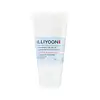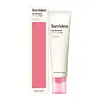What's inside
What's inside
 Key Ingredients
Key Ingredients

 Benefits
Benefits

 Concerns
Concerns

 Ingredients Side-by-side
Ingredients Side-by-side

Water
Skin ConditioningButylene Glycol
HumectantGlycerin
HumectantEthylhexyl Stearate
EmollientDimethicone
EmollientDicaprylyl Carbonate
EmollientBehenyl Alcohol
EmollientStearic Acid
CleansingPalmitic Acid
EmollientCetyl Ethylhexanoate
EmollientHydrogenated Poly(C6-14 Olefin)
Emollient1,2-Hexanediol
Skin ConditioningArachidyl Alcohol
EmollientC14-22 Alcohols
Emulsion StabilisingCetyl-Pg Hydroxyethyl Palmitamide
Skin ConditioningPolyacrylate-13
Mannitol
HumectantArachidyl Glucoside
EmulsifyingC12-20 Alkyl Glucoside
EmulsifyingHydrogenated Polyisobutene
EmollientGlyceryl Caprylate
EmollientEthylhexylglycerin
Skin ConditioningPolyglyceryl-10 Laurate
Skin ConditioningHydrogenated Lecithin
EmulsifyingEthylhexyl Palmitate
EmollientDimethiconol
EmollientPanax Ginseng Root Water
MaskingCarbomer
Emulsion StabilisingSorbitan Isostearate
EmulsifyingAcrylates/Ammonium Methacrylate Copolymer
Scutellaria Baicalensis Root Extract
AstringentPropanediol
SolventCholesterol
EmollientSilica
AbrasivePrunus Mume Fruit Extract
HumectantArachidic Acid
CleansingGlycine Max Oil
EmollientSqualane
EmollientMadecassoside
AntioxidantPolyglyceryl-10 Pentastearate
Skin ConditioningTocopherol
AntioxidantCeramide NP
Skin ConditioningOleic Acid
EmollientPhytosphingosine
Skin ConditioningPentylene Glycol
Skin ConditioningDipotassium Glycyrrhizate
HumectantCanola Oil
EmollientRosmarinus Officinalis Leaf Extract
AntimicrobialWater, Butylene Glycol, Glycerin, Ethylhexyl Stearate, Dimethicone, Dicaprylyl Carbonate, Behenyl Alcohol, Stearic Acid, Palmitic Acid, Cetyl Ethylhexanoate, Hydrogenated Poly(C6-14 Olefin), 1,2-Hexanediol, Arachidyl Alcohol, C14-22 Alcohols, Cetyl-Pg Hydroxyethyl Palmitamide, Polyacrylate-13, Mannitol, Arachidyl Glucoside, C12-20 Alkyl Glucoside, Hydrogenated Polyisobutene, Glyceryl Caprylate, Ethylhexylglycerin, Polyglyceryl-10 Laurate, Hydrogenated Lecithin, Ethylhexyl Palmitate, Dimethiconol, Panax Ginseng Root Water, Carbomer, Sorbitan Isostearate, Acrylates/Ammonium Methacrylate Copolymer, Scutellaria Baicalensis Root Extract, Propanediol, Cholesterol, Silica, Prunus Mume Fruit Extract, Arachidic Acid, Glycine Max Oil, Squalane, Madecassoside, Polyglyceryl-10 Pentastearate, Tocopherol, Ceramide NP, Oleic Acid, Phytosphingosine, Pentylene Glycol, Dipotassium Glycyrrhizate, Canola Oil, Rosmarinus Officinalis Leaf Extract
Water
Skin ConditioningButylene Glycol
HumectantGlycerin
HumectantCollagen Extract
Skin ConditioningCaprylic/Capric Triglyceride
MaskingNiacinamide
Smoothing1,2-Hexanediol
Skin ConditioningCetearyl Olivate
Cetyl Ethylhexanoate
EmollientSoluble Collagen
HumectantHydrolyzed Collagen
EmollientCollagen Amino Acids
MoisturisingCollagen
MoisturisingHexapeptide-2
BleachingPanthenol
Skin ConditioningAllantoin
Skin ConditioningHydrolyzed Hyaluronic Acid
HumectantSodium Hyaluronate
HumectantHydroxyethyl Acrylate/Sodium Acryloyldimethyl Taurate Copolymer
Emulsion StabilisingSodium Hyaluronate Crosspolymer
HumectantPotassium Hyaluronate
Skin ConditioningHydroxypropyltrimonium Hyaluronate
Hyaluronic Acid
HumectantSodium Acetylated Hyaluronate
HumectantHeptyl Undecylenate
EmollientGlyceryl Stearate
EmollientC10-18 Triglycerides
EmollientAcrylates/C10-30 Alkyl Acrylate Crosspolymer
Emulsion StabilisingValine
MaskingThreonine
Proline
Skin ConditioningIsoleucine
Skin ConditioningHistidine
HumectantMethionine
Skin ConditioningCysteine
AntioxidantBiotin
AntiseborrhoeicPentylene Glycol
Skin ConditioningGlycine
BufferingSerine
MaskingGlutamic Acid
HumectantAspartic Acid
MaskingLeucine
Skin ConditioningAlanine
MaskingLysine
Skin ConditioningArginine
MaskingTyrosine
MaskingPhenylalanine
MaskingAdenosine
Skin ConditioningSorbitan Olivate
EmulsifyingSorbitan Isostearate
EmulsifyingCetearyl Alcohol
EmollientVinyldimethicone
Tromethamine
BufferingGlyceryl Acrylate/Acrylic Acid Copolymer
HumectantPvm/Ma Copolymer
Emulsion StabilisingXanthan Gum
EmulsifyingDisodium EDTA
Ethylhexylglycerin
Skin ConditioningWater, Butylene Glycol, Glycerin, Collagen Extract, Caprylic/Capric Triglyceride, Niacinamide, 1,2-Hexanediol, Cetearyl Olivate, Cetyl Ethylhexanoate, Soluble Collagen, Hydrolyzed Collagen, Collagen Amino Acids, Collagen, Hexapeptide-2, Panthenol, Allantoin, Hydrolyzed Hyaluronic Acid, Sodium Hyaluronate, Hydroxyethyl Acrylate/Sodium Acryloyldimethyl Taurate Copolymer, Sodium Hyaluronate Crosspolymer, Potassium Hyaluronate, Hydroxypropyltrimonium Hyaluronate, Hyaluronic Acid, Sodium Acetylated Hyaluronate, Heptyl Undecylenate, Glyceryl Stearate, C10-18 Triglycerides, Acrylates/C10-30 Alkyl Acrylate Crosspolymer, Valine, Threonine, Proline, Isoleucine, Histidine, Methionine, Cysteine, Biotin, Pentylene Glycol, Glycine, Serine, Glutamic Acid, Aspartic Acid, Leucine, Alanine, Lysine, Arginine, Tyrosine, Phenylalanine, Adenosine, Sorbitan Olivate, Sorbitan Isostearate, Cetearyl Alcohol, Vinyldimethicone, Tromethamine, Glyceryl Acrylate/Acrylic Acid Copolymer, Pvm/Ma Copolymer, Xanthan Gum, Disodium EDTA, Ethylhexylglycerin
 Reviews
Reviews

Ingredients Explained
These ingredients are found in both products.
Ingredients higher up in an ingredient list are typically present in a larger amount.
1,2-Hexanediol is a synthetic liquid and another multi-functional powerhouse.
It is a:
- Humectant, drawing moisture into the skin
- Emollient, helping to soften skin
- Solvent, dispersing and stabilizing formulas
- Preservative booster, enhancing the antimicrobial activity of other preservatives
Butylene Glycol (or BG) is used within cosmetic products for a few different reasons:
Overall, Butylene Glycol is a safe and well-rounded ingredient that works well with other ingredients.
Though this ingredient works well with most skin types, some people with sensitive skin may experience a reaction such as allergic rashes, closed comedones, or itchiness.
Learn more about Butylene GlycolCetyl Ethylhexanoate is an emollient ester. It comes from cetearyl alcohol and 2-ethylhexanoic acid.
Cetyl Ethylhexanoate is an emollient that adds a velvety feel to skin without being greasy or oily. Emollients help trap moisture into your skin, keeping your skin soft and hydrated.
Ethylhexylglycerin (we can't pronounce this either) is commonly used as a preservative and skin softener. It is derived from glyceryl.
You might see Ethylhexylglycerin often paired with other preservatives such as phenoxyethanol. Ethylhexylglycerin has been found to increase the effectiveness of these other preservatives.
Glycerin is already naturally found in your skin. It helps moisturize and protect your skin.
A study from 2016 found glycerin to be more effective as a humectant than AHAs and hyaluronic acid.
As a humectant, it helps the skin stay hydrated by pulling moisture to your skin. The low molecular weight of glycerin allows it to pull moisture into the deeper layers of your skin.
Hydrated skin improves your skin barrier; Your skin barrier helps protect against irritants and bacteria.
Glycerin has also been found to have antimicrobial and antiviral properties. Due to these properties, glycerin is often used in wound and burn treatments.
In cosmetics, glycerin is usually derived from plants such as soybean or palm. However, it can also be sourced from animals, such as tallow or animal fat.
This ingredient is organic, colorless, odorless, and non-toxic.
Glycerin is the name for this ingredient in American English. British English uses Glycerol/Glycerine.
Learn more about GlycerinPentylene glycol is typically used within a product to thicken it. It also adds a smooth, soft, and moisturizing feel to the product. It is naturally found in plants such as sugar beets.
The hydrophilic trait of Pentylene Glycol makes it a humectant. As a humectant, Pentylene Glycol helps draw moisture from the air to your skin. This can help keep your skin hydrated.
This property also makes Pentylene Glycol a great texture enhancer. It can also help thicken or stabilize a product.
Pentylene Glycol also acts as a mild preservative and helps to keep a product microbe-free.
Some people may experience mild eye and skin irritation from Pentylene Glycol. We always recommend speaking with a professional about using this ingredient in your routine.
Pentylene Glycol has a low molecular weight and is part of the 1,2-glycol family.
Learn more about Pentylene GlycolSorbitan Isostearate is an emulsifer and cleaning agent. It is created from isostearic acid and sorbitol.
As an emulsifier, Sorbitan Isostearate prevents oils and water from separating.
Due to its isostearic acid base, it may not be safe for Malassezia or fungal acne.
Learn more about Sorbitan IsostearateWater. It's the most common cosmetic ingredient of all. You'll usually see it at the top of ingredient lists, meaning that it makes up the largest part of the product.
So why is it so popular? Water most often acts as a solvent - this means that it helps dissolve other ingredients into the formulation.
You'll also recognize water as that liquid we all need to stay alive. If you see this, drink a glass of water. Stay hydrated!
Learn more about Water